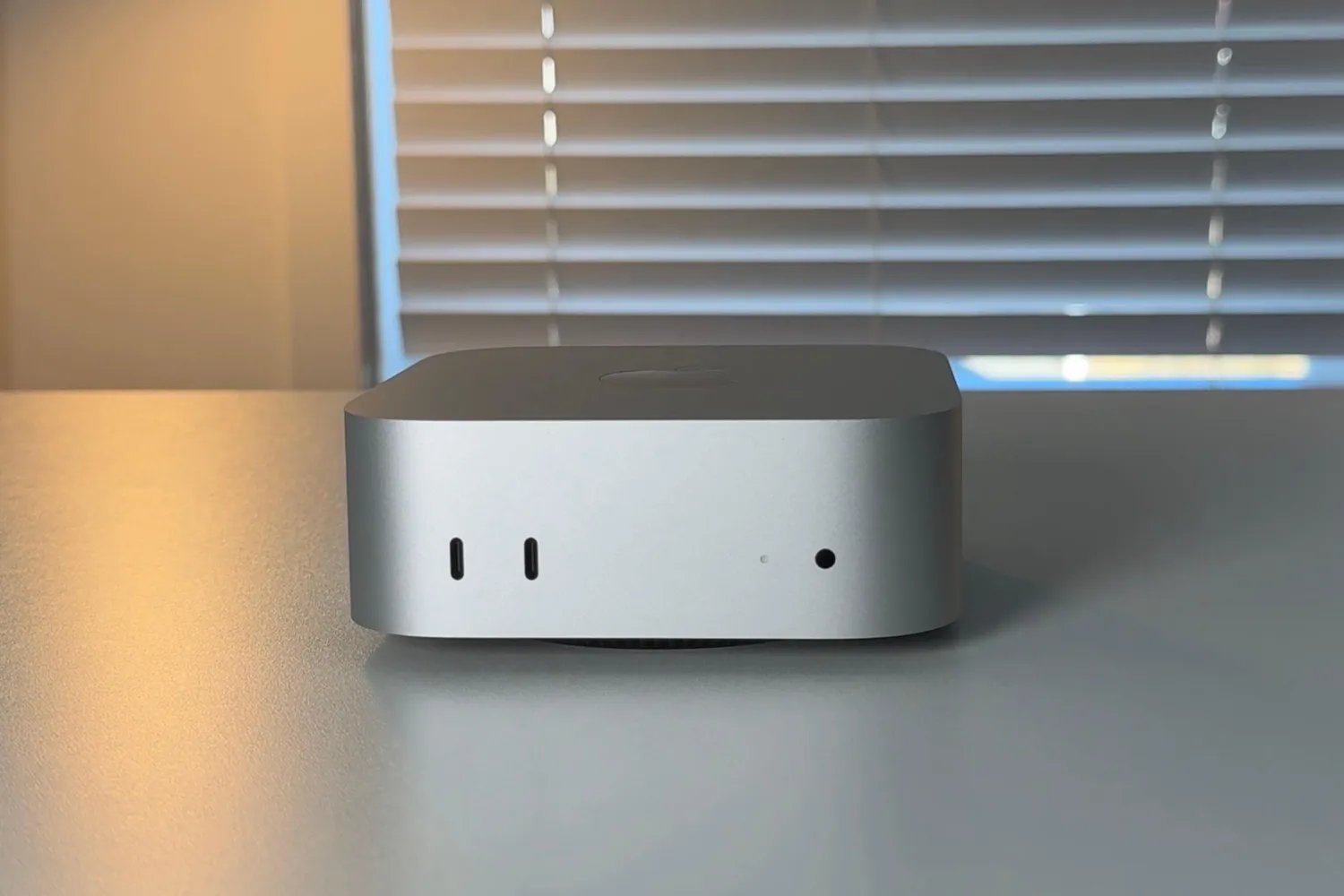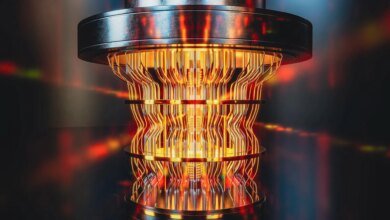Hijacking a bacterial ABC transporter for genetic code expansion
Hijacking a bacterial ABC transporter for genetic code expansion

Expression of ncAA bearing proteins
Chemically competent E. coli K12 cells were co-transformed with pBAD_POI (encoding the POI with a C-terminal H6 tag) and pEVOL_PylRS (encoding two copies of the PylRS variant and tRNACUA). After recovery in 1 ml SOC medium for 1 h at 37 °C, cells were cultured in 5 ml of 2-YT medium supplemented with ampicillin (100 µg ml−1) and chloramphenicol (50 µg ml−1) and grown overnight at 37 °C. The overnight culture was then diluted to an OD600 of 0.05 in either 2-YT or AI media52 supplemented with ampicillin (100 µg ml−1), chloramphenicol (50 µg ml−1) and ncAA. Cells grown in 2-YT medium were grown to an OD600 of 0.6 and induced with 0.05% l-arabinose and grown overnight at 37 °C. Cells grown in AI media52 were directly grown overnight at 37 °C. Cells of the overnight culture were collected by centrifugation at 4,000g for 10 min at 4 °C and the pellets were analysed by SDS–PAGE or stored at −20 °C for further use.
For the incorporation of XisoK ncAAs into proteins for purification and downstream characterization, the corresponding G-XisoK peptides were used during expression. The dipeptide XisoK was only used for comparing expression levels in whole lysate. For the incorporation of Z ncAAs, both the free amino acid Z and the corresponding Z-AisoK tripeptide were used. Proteins expressed in the presence of Z-AisoK tripeptides were purified and analysed via LC–MS to confirm Z or AisoK incorporation. For dual incorporation, peptide 16 was used for purification experiments.
Purification of His6-tagged proteins
Cell pellets were resuspended in lysis buffer (20 mM Tris-HCl pH 8.0, 300 mM NaCl, 30 mM imidazole, 1 mM PMSF) and the cells were lysed via sonication in an ice water bath. Lysed cells were centrifuged at 14,000g for 20 min at 4 °C and cleared lysate was incubated with Ni Sepharose fast flow beads (1 ml slurry per 1 l culture, Cytiva) pre-equilibrated with Ni-NTA wash buffer (20 mM Tris-HCl pH 8.0, 300 mM NaCl, 30 mM imidazole) and incubated on a roller for 1 h at 4 °C. Beads were then washed with 10 column volumes of wash buffer 3 times and protein was eluted with elution buffer (20 mM Tris-HCl pH 8.0, 300 mM NaCl, 300 mM imidazole). Resulting protein was either directly used for mass determination or further purification was performed via gel filtration using a Superdex 75 increase 10/300 GL column (Cytiva) equilibrated with SE buffer (2× PBS pH 7.0 for eGFPNb or 20 mM potassium phosphate buffer pH 6.5, 100 mM NaCl for PisoK-bearing proteins or 1× PBS pH 7.4 for Affibody and ProteinZ). Fractions containing protein were pooled and concentrated using Amicon centrifugal filter units with the appropriate molecular weight cut-off (MWCO). Protein was then flash frozen in liquid nitrogen and stored at −80 °C till further use. Proteins bearing CisoK were treated with methoxyamine (10 µM protein, 100 mM methoxyamine at pH 4.0 ammonium acetate) and buffer exchanged in 1× PBS before storage.
Generation of an OppA error-prone library
An error-prone library of oppA was generated using an error-prone PCR kit (Jena Bioscience PP-102). Primers OppA_EP_fwd and OppA_EP_rev (Supplementary Table 2) were used to amplify oppA from pEVOL_MbPylRS_oppA according to the manufacturer’s instructions, running for 25 cycles and adding 2.5 µl error-prone solution. Resultant amplicon was purified on a 1% agarose gel and digested with NdeI and PstI-HF. Digested insert was then ligated with T4 ligase into a backbone generated by digesting pEVOL_MbPylRS_oppA with NdeI and PstI-HF, followed by dephosphorylation with Antarctic Phosphatase. Electrocompetent DH10β cells were then transformed with the purified ligation. After recovery in SOC medium for 1 h at 37 °C, cells were added to 50 ml of 2-YT medium supplemented with chloramphenicol (50 µg ml−1) and grown overnight at 37 °C. Library plasmid from the overnight culture was purified and used for subsequent steps. The size of the library was determined by plating the freshly transformed cells in a dilution series on LB agar plates supplemented with chloramphenicol (50 µg ml−1). The size was calculated to be 4 × 106. Multiple single clones were sequenced to determine the average error rate and was optimized to be ~0.8% or an average of 5 amino acid mutations per gene.
Generation of OppA site-saturation libraries
For the tryptone resistance site-saturation library, four hotspot positions in OppA were selected for site-saturation, on the basis of sequenced variants from selection of the error-prone library. Positions were chosen if mutations occurred more than once (R439 and S460) or if mutations occurred close to each other in different variants (D221 and W222).
For the site-saturation library targeting the pocket of the Z position, four positions were selected on the basis of the X-ray crystal structure of wt-OppA–G-SisoK around the N-terminal glycine of G-SisoK (V60, S63, L530 and N532) to accommodate new N-terminal amino acids.
Sites were randomized using degenerate trimer primers (Ella Biotech) or NNK primers. For the tryptone resistance library, a mix of templates based on pEVOL_MbPylRS_oppA containing wild-type OppA and four variants from the error-prone library were amplified with library primers (Supplementary Table 2). For the Z position library, pEVOL_MbPylRS_oppA_wt was used as a template. Both tryptone resistance template mix and Z library wild-type OppA template were amplified with their respective library primers (Supplementary Table 2). The linear amplicon was then purified on a 1% agarose gel and digested with BbsI-HF and DpnI. Digested fragments were circularized via ligation with T4 ligase and electrocompetent DH10β cells were transformed with the circularized library plasmid. After recovery in SOC medium for 1 h at 37 °C, cells were added to 50 ml of 2-YT medium supplemented with chloramphenicol (50 µg ml−1) and grown overnight at 37 °C. Library plasmid was purified from the overnight culture and used as the template for the next round of amplification to randomize the next position(s).
For the tryptone resistance library, this process was repeated 3 times, each time randomizing a different position, to give a library with positions D221, W222, R439 and S460 mutated to all 20 amino acids on wild-type OppA and 4 error-prone variants. The library size was 8 × 105. For the Z library the process was repeated 2 times to cover all 4 positions (V60, S63, L530 and N532). The library size was 1 × 106.
FACS-based screening protocol
Electrocompetent E. coli K12 ΔoppA cells containing sfGFP reporter plasmid pBAD_sfGFP_N150TAG_H6 were transformed with the OppA library (pEVOL_MbPylRS_oppA_EP_lib, pEVOL_MbPylRS_oppA_trimer_lib, pEVOL_MbPylRS_oppA_Z_lib or pEVOL_MbPylRS_oppA_wt). After recovery in 1 ml SOC for 1 h at 37 °C, transformed cells were diluted in 50 ml of non-inducing medium (AI medium19 without arabinose) supplemented with ampicillin (100 µg ml−1) and chloramphenicol (50 µg ml−1) and grown overnight. The overnight culture was then diluted in non-inducing medium and grown to an OD600 of 0.6.
At this point, 0.05% arabinose was added to induce sfGFP expression and the culture was split into smaller cultures. For the tryptone resistance screening campaign, cultures were supplemented with or without 0.5 mM G-SisoK and varying amounts of tryptone to apply a selection pressure towards OppA variants which preferably bound to G-SisoK.
For the screening of the Z library, cultures were supplemented with 2 mM of each Z-AisoK tripeptide of interest (13 or 15). Cultures were then grown for 4 h at 37 °C to allow for sfGFP expression. To halt growth, the cultures were cooled on ice for 10 min, centrifuged (4,000g, 5 min, 4 °C) and resuspended in ice cold PBS pH 7.0. The PBS cell suspension was sorted on a Sony cell sorter (SH800) using a 70-µm chip sorting for cells with highest sfGFP fluorescence intensity. Gating was decided on the basis of the positive control (tryptone resistance screening: wt-oppA, 0.5 mM G-SisoK, 0 g l−1 tryptone, Z library screening: wt-oppA, 2 mM G-AisoK, 0 g l−1 tryptone) and the negative controls (wt-oppA, 0.5 mM G-SisoK, X g l−1 tryptone, with X being the tryptone concentration used in that round of enrichment, and wt-oppA, 0 mM G-SisoK, 0 g l−1 tryptone). For each round, cells with the top 0.5–2% sfGFP fluorescence were sorted. Sorted cells were recovered in SOC medium supplemented with ampicillin (50 µg ml−1) and chloramphenicol (25 µg ml−1) overnight at 37 °C and the process was repeated for further enrichment. After multiple rounds of enrichment, cells were sorted into a 96-well plate containing SOC supplemented with ampicillin (50 µg ml−1) and chloramphenicol (25 µg ml−1) and grown overnight at 37 °C. Cultures grown from single cells were further evaluated via the fluorescence plate reader assay and variants which showed the desired phenotype were sent for Sanger sequencing. The error-prone library was subjected to 5 rounds of enrichment, each time doubling the tryptone concentration from 1 g l−1 (round 1) to 16 g l−1 (round 5). The site-saturation library was directly grown in LB medium (10 g l−1 tryptone) for 2 rounds of enrichment and 2-YT medium (16 g l−1) for 3 rounds of enrichment. The Z library was subjected to 3 rounds of enrichment at 2 mM of Z-AisoK tripeptide 13 or 15.
Preparation of E. coli lysates for LC–MS based uptake assays
The uptake assay protocol was adapted from previously published protocols21,36. Relevant E. coli strains were transformed with a pBAD plasmid to prevent contamination of cultures. After recovery in 1 ml SOC for 1 h at 37 °C, cells were cultured in 5 ml of 2-YT or AI medium supplemented with ampicillin (100 µg ml−1) and grown overnight at 37 °C. Overnight cultures were diluted to an OD600 of 0.05 in 5 ml of 2-YT or AI medium supplemented with ampicillin (100 µg ml−1) and ncAA or peptide and grown overnight at 37 °C. The OD600 of the overnight cultures was determined and 12 OD ml were collected by centrifugation at 4,000g for 10 min. Cell pellets were then washed 3 times with 1 ml of cold medium and resuspended in 400 µl of a methanol:water solution (60:40). Cells were lysed via 5 freeze thaw cycles in liquid nitrogen and a 42 °C water bath. Lysate was cleared by centrifugation at 17,900g for 20 min. Five-hundred microlitres of cleared lysate was passed through Amicon centrifugal filter units (Millipore, 3 kDa MWCO) and the flow through was injected onto the LC–MS for analysis. For cultures incubated with BocK, samples were injected onto a Zorbax SB-C18 (Agilent, 4.6 × 150 mm) column and a gradient of 5–95% was used. For cultures incubated with XisoK and G-XisoK peptides, samples were injected on a Poroshell 120 HILIC-Z (Agilent, 2.1 × 100 mm) column using a gradient of 95–10%. The mass spectrometer was set to single ion mode to detect the relevant m/z for each ncAA or peptide.
To determine intracellular concentrations, calibration points of lysate spiked with known ncAA or peptide concentrations were measured. Ion peaks were integrated, and integral values plotted against concentration to determine a linear calibration line. Integral values of unknown samples were interpolated on calibration line to determine lysate concentrations. Intracellular concentrations were estimated assuming 1 OD600 = 8 × 108 cells per ml and the volume of an E. coli cell (0.6 fl).
Determination of K
d using microscale thermophoresis
Microscale thermophoresis was performed on the NanoTemper Monolith NT.115 (NanoTemper Technologies). Wild-type OppA and evolved variants were fluorescently labelled using the Monolith Protein Labeling Kit RED-NHS 2nd Generation (NanoTemper Technologies) and diluted to 100 nM in assay buffer (2× PBS pH 7.0, 0.02% Tween-20). Peptides were diluted to double the highest measured concentration in assay buffer and diluted twofold in a dilution series to give 16 peptide concentrations. Equal volumes of protein and peptide solutions were mixed (final protein concentration of 50 nM) and incubated at room temperature for 30 min. Samples were loaded into capillaries (Monolith NT.115 Capillaries, NanoTemper Technologies) and measured according to manufacturer’s instructions. Three independent replicates were measured for each peptide–protein combination and data analysis was performed with MO.affinity Analysis (v.3.0.5, NanoTemper Technologies).
Generating isoK12 strain via homologous recombination
Primers with 50 bp overhangs homologous to regions upstream and downstream of the OppA locus in E. coli genome were used to amplify oppA-iso from pEVOL_MbPylRS_oppA-iso. (Supplementary Table 2).
A single clone of E. coli K12 ΔoppA cells transformed with a pSIJ8 plasmid (Supplementary Table 2) was cultured in 2-YT medium supplemented with ampicillin (50 µg ml−1) and grown at 30 °C, 200 rpm until an OD600 of 0.3 followed by induction with 15 mM arabinose for the expression of lambda red recombineering genes. After incubation for 45 min at 37 °C the culture was cooled on ice to halt growth and made electrocompetent. The resulting electrocompetent E. coli K12 ΔoppA cells with expressed recombineering genes were then transformed with the linear DNA fragment encoding oppA-iso. After recovery in 1 ml SOC for 2 h at 37 °C, cells were diluted in 2-YT medium and grown overnight at 37 °C for the curing of thermosensitive plasmid pSIJ8. The overnight culture (containing a mix of ΔoppA and knock-in cells) was diluted and grown to an OD600 of 0.6 and made electrocompetent. These cells were then co-transformed with aaRS plasmid pEVOL_MbPylRS and sfGFP reporter pBAD_sfGFP_N150TAG_H6. Transformed cells were recovered in 1 ml SOC for 1 h at 37 °C and diluted in 2-YT medium supplemented with ampicillin (100 µg ml−1) and chloramphenicol (50 µg ml−1) and grown to an OD600 of 0.6 and sfGFP expression was induced with 0.05% arabinose and 0.5 mM G-SisoK was added. The culture was grown for 4 h, cooled on ice, centrifuged (4,000g, 5 min, 4 °C), and resuspended in ice cold PBS pH 7.0. Cells with the highest sfGFP fluorescence were sorted as single cells into a 96-well plate containing 2-YT medium and grown overnight. Clones with the correct genomic insert were confirmed with sequencing of the genomic locus and whole-genome sequencing. Once confirmed, plasmids were cured from the strain via electroporation.
Generating K12-Z1 and K12-Z2 strains via CRISPR-mediated genome editing
Knock-in generation was adapted from a previously published protocol39. In brief, a single clone of E. coli K12 ΔoppA cells transformed with pSIMcpf1 was cultured in 2-YT medium supplemented with hygromycin (150 µg ml−1) and grown at 30 °C and 200 rpm until an OD600 of 0.2 was reached. At this point, expression of lambda red recombineering genes was induced by incubation at 42 °C for 15 min. Cultures were then cooled on ice for 20 min to halt the growth and cells were made electrocompetent. The resulting electrocompetent cells were transformed with pTF_oppA-Z1 or pTF_oppA-Z2, which carried a donor DNA with genes for the respective OppA variant along with 50 bp upstream and downstream homologous regions of the oppA locus, as well as a CRISPR array encoding a guide RNA (gRNA) targeting the FRT site present in the knocked out oppA locus (Supplementary Table 7). After electroporation, cells were rescued in SOC medium for 1 h, plated on LB agar with hygromycin (150 µg ml−1) and spectinomycin (120 µg ml−1) and incubated overnight at 30 °C. Successfully knocked-in clones were confirmed via colony PCR and grown in 2-YT medium with 0.05% arabinose for 5 h at 30 °C and then grown overnight at 37 °C to cure the cells of plasmids. To further confirm successful integration, cells were sent for whole-genome sequencing.
Generating peptidase double knockouts via CRISPR-mediated genome editing
Peptidase knockouts were generated analogously to the K12-Z1 and K12-Z2 strains. E. coli K12 ΔpepN cells from the Keio collection38 were transformed with pSIMcpf1 (Supplementary Table 2) and were prepared as previously described. pTF plasmids (Supplementary Table 1), which carry a donor DNA of 50 bp upstream and downstream of the peptidase genomic locus, as well as a CRISPR array encoding two gRNAs that target the corresponding peptidase, were used (Supplementary Table 7). Colonies were confirmed via colony PCR and whole-genome sequencing. Plasmids were cured as previously described.
Dual stop codon suppression for incorporation of AcK and pLisoK into proteins
Chemically competent E. coli K12 cells were co-transformed with pBAD_POI (either pBAD_sfGFP_N40TAA_N150TAG_H6 or pBAD_Ub_K48TAA_TEV_SUMO2_K11TAG_H6) with a C-terminal His6 tag) and pEVOL_AcKRS3(TAA)_RBS_MaPylRS_IP(TAG) (encoding AcKRS3 and MaPylRS_IP polycistronically and their respective tRNAs). After recovery in 1 ml SOC medium for 1 h at 37 °C, cells were cultured in 5 ml of 2-YT medium supplemented with ampicillin (100 µg ml−1) and chloramphenicol (50 µg ml−1) and incubated overnight at 37 °C, 200 rpm. The overnight culture was then diluted to an OD600 of 0.05 in AI medium19 supplemented with ampicillin (100 µg ml−1), chloramphenicol (50 µg ml−1) and respective ncAA and/or peptide. Cells were grown overnight at 37 °C and the overnight culture was collected by centrifugation at 4,000g for 10 min at 4 °C and the pellets were stored at −20 °C till further use. Ub-K48pLisoK-TEV-SUMO2-K11AcK-H6 was purified as described in ‘Purification of His6-tagged proteins’. For cleavage, Ub-K48pLisoK-TEV-SUMO2-K11AcK-H was diluted into buffer (PBS pH 7.0 with 3 mM DTT) and incubated with TEV protease (0.1 mg ml−1) for 30 min at room temperature.
Reporting summary
Further information on research design is available in the Nature Portfolio Reporting Summary linked to this article.
■ مصدر الخبر الأصلي
نشر لأول مرة على: www.nature.com
تاريخ النشر: 2025-10-15 03:00:00
الكاتب: Tarun Iype
تنويه من موقع “yalebnan.org”:
تم جلب هذا المحتوى بشكل آلي من المصدر:
www.nature.com
بتاريخ: 2025-10-15 03:00:00.
الآراء والمعلومات الواردة في هذا المقال لا تعبر بالضرورة عن رأي موقع “yalebnan.org”، والمسؤولية الكاملة تقع على عاتق المصدر الأصلي.
ملاحظة: قد يتم استخدام الترجمة الآلية في بعض الأحيان لتوفير هذا المحتوى.





